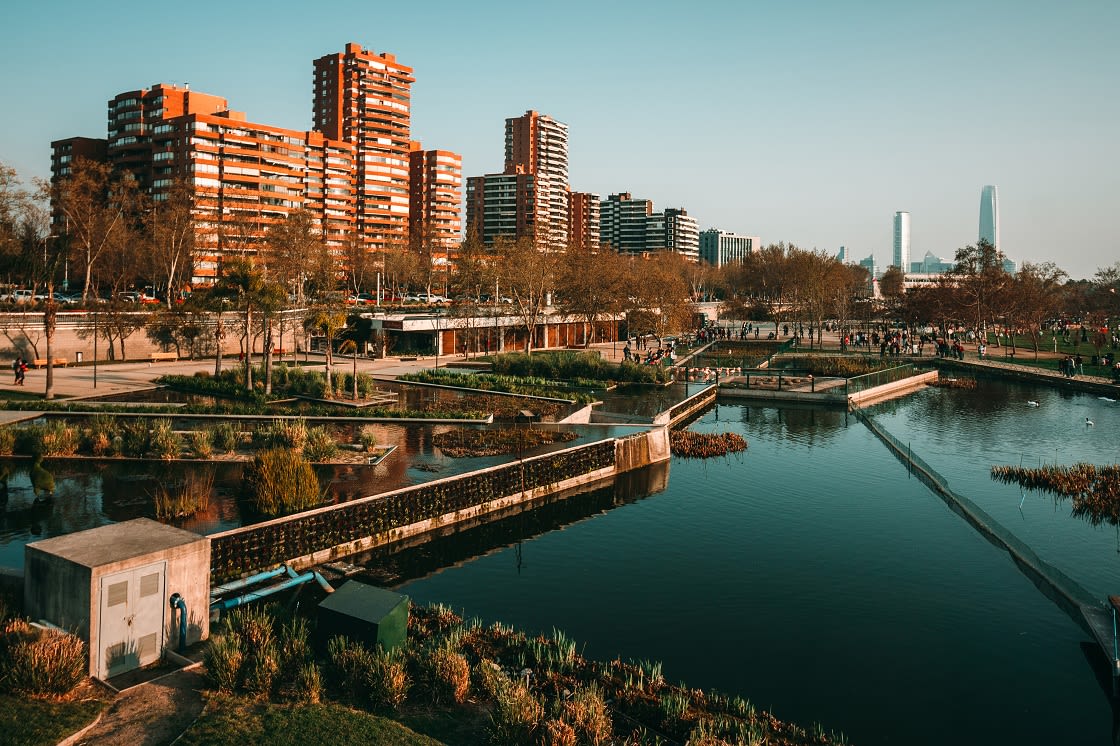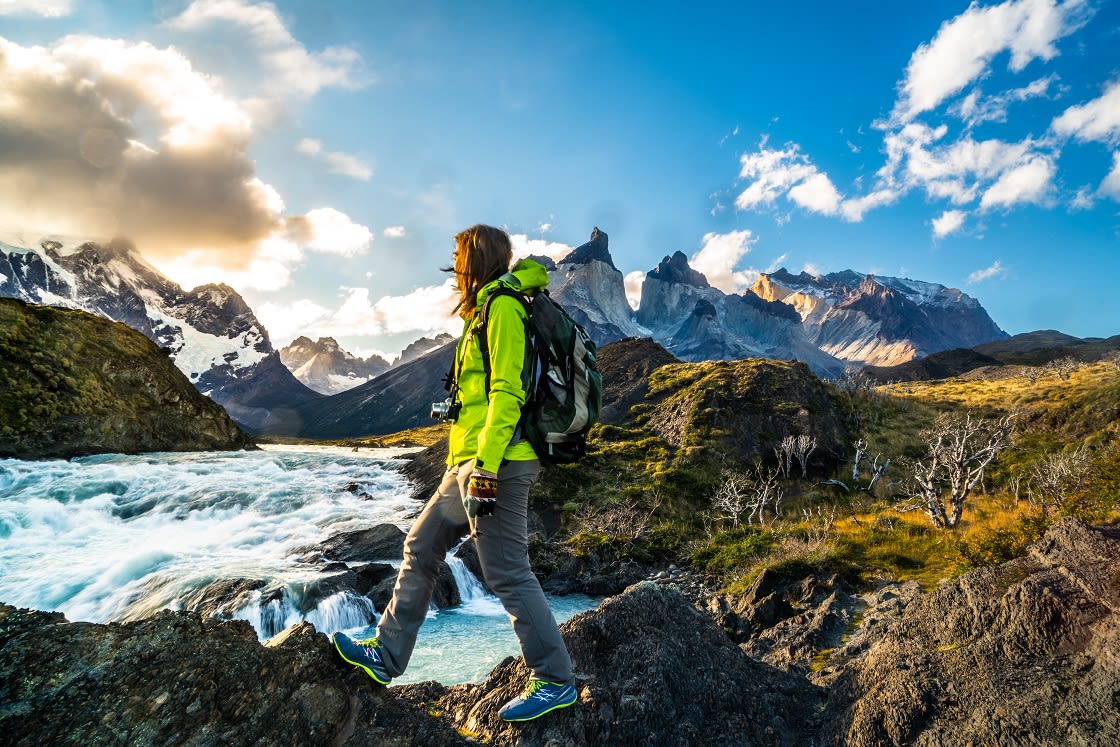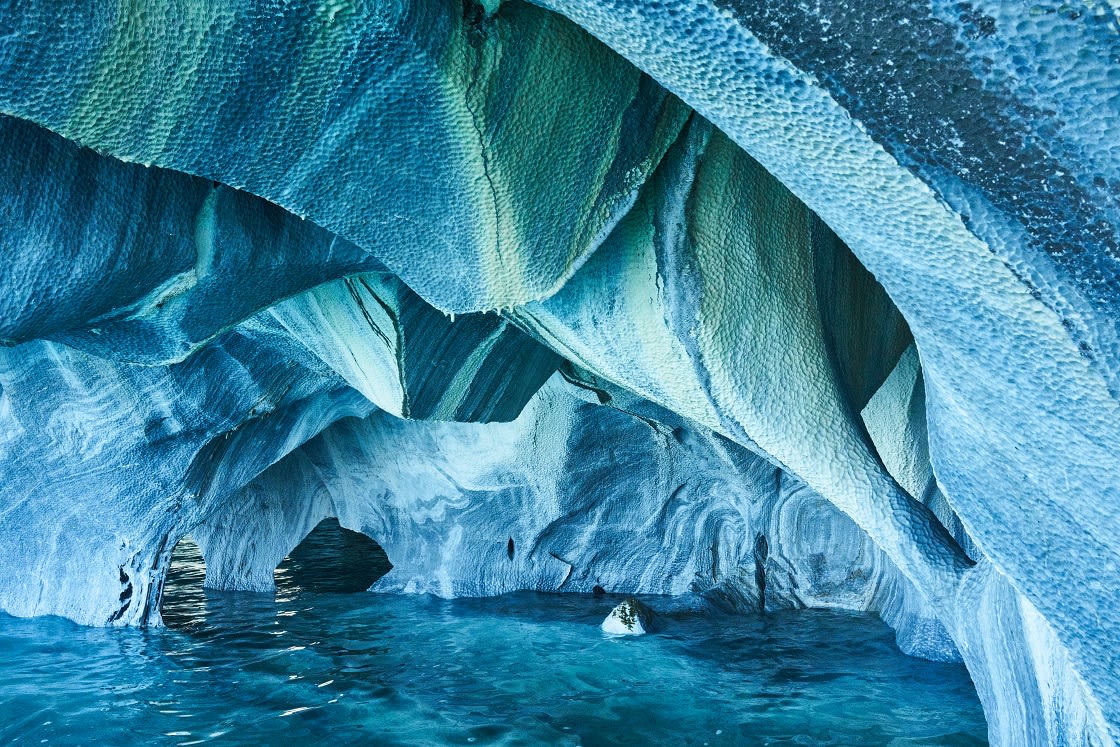
Squeezed between the Andes and the Pacific, and boasting one of the planet’s most diverse landscapes, Chile is the longest country in the world. It is never more than 112 miles wide, but its coastline extends 2,672 miles. The top tourist attractions in Chile include the world’s driest desert, together with spectacular scenery of volcanoes, glaciers, and fjords. Cities, such as the capital of Santiago, offer many fine museums and art galleries, while the stunning Easter Island will entice you with its famous stone figures. Read on for the top ten tourist attractions in Chile.

Sunset At Easter Island
One of the most isolated islands on Earth, Easter Island is located in the southeastern Pacific Ocean. Officially a territory of Chile, it lies thousands of miles off the coast, roughly halfway to Tahiti. It was first visited by Europeans in 1722 and named by a Dutch Explorer who initially set eyes on it on Easter Sunday. The island is famous for its 887 extant monumental statues, called “moai”, created by the early Rapa Nui people centuries ago.
Known as ‘the nursery,’ the volcano of Rano Raraku is the quarry for the hard volcanic tuff from which the moai were cut. You’ll feel as though you’re stepping back into early Polynesian times, wandering among dozens of moai in all stages of progress studded on the southern slopes of the volcano. Not surprisingly, the well-publicized moai have overshadowed the island’s other tourist attractions but Easter Island also offers some great diving and surfing as well as two volcanic craters and several sandy beaches.

Santiago De Chile
Locals will tell you that Santiago IS Chile, 40 percent of the population live here. This cosmopolitan, energetic, sophisticated city is not only the financial and business capital of Chile but also the country’s cultural and entertainment hub. It’s a wonderful place for strolling, and each neighborhood has its own distinctive vibe. Head out for the day to take in the museums, grand architecture, and pedestrian malls of the Centro, before an afternoon picnic in one of the gorgeous hillside parks that punctuate the city’s landscape.
Plaza de Armas is the city’s colonial heartbeat. You’ll find two extraordinary landmarks, the Royal Court Palace, home of the National History Museum, and the Metropolitan Cathedral, built in the 18th century. The Chilean National Museum of Fine Arts has a large permanent collection of paintings, sculptures, and photos. Other must-sees are the excellent Museum of Pre-Columbian Art, featuring collections relating to the country’s native people, and the Museum of Memory and Human Rights commemorating those who suffered under the Pinochet regime.
Cerro San Cristóbal is a hill in northern Santiago with a jaw-dropping view over the city and, on a clear day, the Andes. At the peak, there is a church, a 72-ft-high statue of the Virgin Mary, and an observatory. The summit can be reached by an aerial tramway.

New Year’s Celebration In Valparaiso
Blessed with fabulous views, the hillside port of Valparaiso is a celebration of everything bohemian. Best known for its brightly colored houses, vibrant nightlife, and beautiful seaside views, it is one of the graffiti capitals of South America. Here, winding streets and stairways drip down the hillsides of the old town to the atmospheric cafes and bars around the port area.
While there is a grittiness about it, beauty is everywhere you look in the form of wonderful architecture and delightful street art. You can ride the ancient funicular elevators and get lost in the labyrinth of streets and cobblestone alleyways that somehow magically connect the city’s 42 hills. Many tourist attractions focus on the country’s rich maritime heritage, including Lord Cochrane’s Museum, located in a lovely old colonial home built in 1842. Another must-visit tourist attraction is the superb Naval and Maritime Museum.
Valle del Elqui is an exquisitely irrigated green valley stretching about 87 miles from the beach town of La Serena all the way to the Argentinean border. The steep, dry, shrub mountains on both sides give way to a fertile green valley complete with vineyards, pisco distilleries, and plantations of avocados, papayas, and oranges. Charming little towns can be found throughout the valley and many of the pisco distilleries offer tours and tastings. Valle del Elqui is also home to a number of observatories, this being one of the best places in the world to observe the night sky.

Torres Del Paine National Park, Mountain Landscape
The spectacular Torres del Paine National Park in southern Patagonia is a stunningly beautiful area encompassing snow-capped mountain peaks, cascading rivers and waterfalls, glaciers, and mirrored lakes. Perhaps the most notable of its many wonderful features are the three towering granite peaks of the Paine Massif, which dominate this already breathtaking scenery. A world biosphere reserve, it has a huge variety of plant and animal species which, with its incredibly beautiful setting, has made it an almost unequaled destination for hikers and backpackers, ecology-lovers, and adventure junkies.
Hiking is one of the park’s most popular activities, with numerous well-marked trails, many offering overnight shelters (refugios) with the basics needed for longer treks that circle the mountains. If you’re planning on anything more than a day’s hiking, professional guides are recommended and, in some areas, mandatory. Guanacos are one of the most common mammals found in the park; others include foxes and pumas, and the endangered Chilean Huemul. Birds include the Andean condor, black-chested buzzard-eagle, rufous-tailed hawk, Magellanic horned owl, the Chilean flamingo, Darwin’s rhea, Magellanic woodpecker, and Magellan goose.

Amphitheatre Is Beautiful Geological Formation Of Moon Valley In Atacama
Valle de la Luna, which literally translates as “Valley of the Moon,” lies eight miles west of San Pedro de Atacama at the north end of the country, near its border with Bolivia. This rugged, inhospitable-looking landscape in the heart of the Atacama Desert has an eerie resemblance to the surface of the moon, an effect caused by the erosion of its sand and stone features by wind and water over countless millennia.
Among its most interesting features are its dry lake beds, which are dazzlingly white due to deposited salt, and prone to producing fascinating natural saline outcrops. There are many caverns in the region, some containing evidence of pictographs created by early man and where some of the world’s oldest mummies, preserved by the area’s aridity, were found. The most famous of these, the Chinchorro mummies, are now on display at the archaeological museum in San Miguel de Azapa.
The second oldest city in Chile, La Serena is the capital of its region in the north and is a charming place to spend some time. It has a lovely long beach lining the ocean and lots of great colonial and neo-colonial architecture as well as old stone churches and leafy boulevards, markets, an archaeological museum, and an astronomical observatory. If you’re an outdoor enthusiast, you may enjoy biking through the Elqui Valley, swimming, snorkeling, diving, and/or hiking through Isla Damas, as well as visiting the national park at Fray Jorge.

The Marble Caves Of Patagonia, Chile
These solid marble caves in the Patagonian Andes are the result of 6,000 years of erosion, caused by water smashing against the calcium carbonate of the cave walls. Between September and February, the ice melt from the surrounding glaciers turns the water a gorgeous turquoise color, rather than the intense deep blue that can be seen at other times of the year. Kayaking through these caves is an absolute must. Boat trips and tours can be arranged.

The Abandoned Humberstone Saltpeter Works
Another Chile tourist attraction is the Humberstone and Santa Laura Saltpeter Works, situated in the remote Pampa Desert. This fascinating ghost town was once home to a bustling community. For more than 60 years from about 1880, thousands of Chilean, Bolivian, and Peruvian workers toiled in this hostile environment. Although derelict since 1960, the site offers a fascinating glimpse into the tough conditions faced by these “pampinos,” with many of the site’s larger structures still standing and open for exploration. It is recommended that you go with a professional guide.
While Rainforest Cruises aim to provide accurate and up-to-date information, we make no representations as to the accuracy or completeness of any information herein or found by following any link on this site. Rainforest Cruises cannot and will not accept responsibility for any omissions or inaccuracies, or for any consequences arising therefrom, including any losses, injuries, or damages resulting from the display or use of this information.




